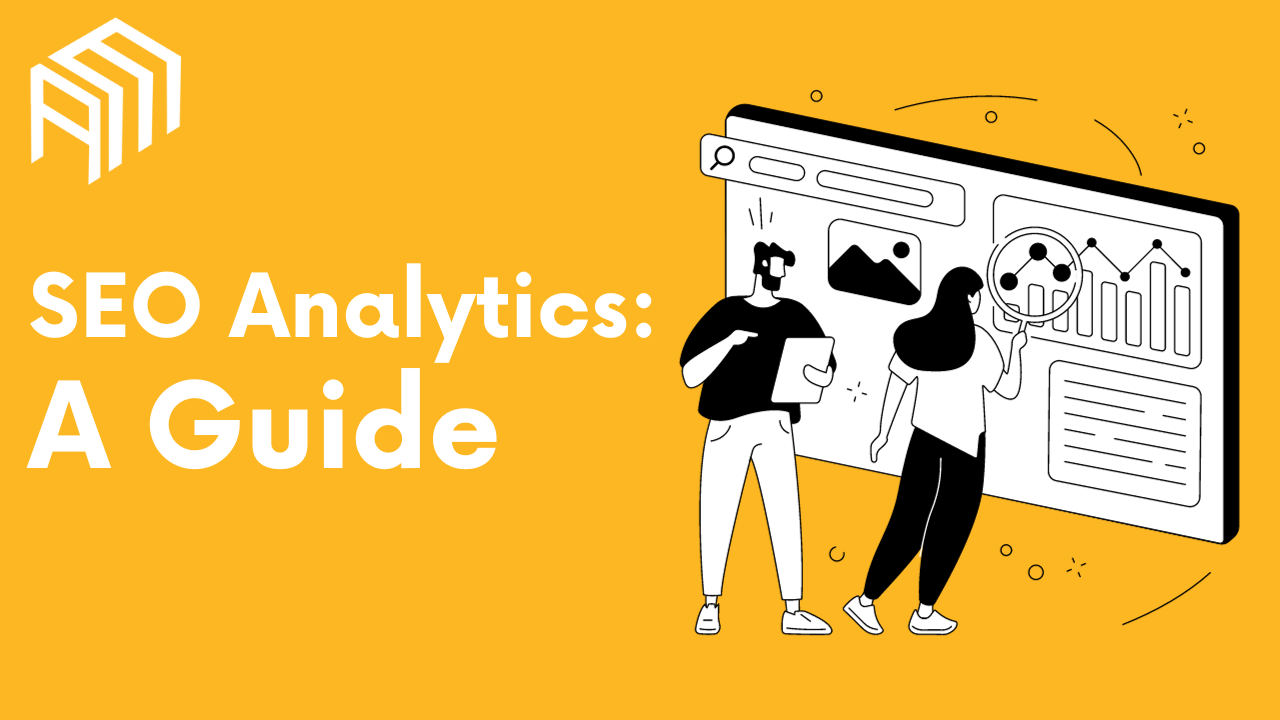SEO marketing continues to rise. Keywords, backlinks, and high-quality content are more relevant than ever for search engine result rankings.
However, with the ongoing efforts of search engines like Google to improve the results that come up on their SERPs, their algorithms and overall ranking factors can change. You could manage your client’s SEO content to your maximum skills, but the optimization results might not look how you want them to.
That’s when SEO analytics come in. These will help you catch any spaces where your SEO efforts might require improvement. Join us on a full dive into the sea of SEO analytics.
Understanding SEO Analytics
SEO analytics is the process of collecting, organizing, and studying SEO data obtained through specific SEO tools.
One of the goals of SEO analytics is to make sense of the data you collect for you and your clients. Furthermore, this data analysis aims to provide insights that will allow you to take actions based on it, such as:
- Identifying if the web page needs technical SEO improvement which ultimately impacts the site’s bounce rate and overall user experience.
- Learning which sources are contributing to organic conversions.
- Finding opportunities to boost the site’s SERPs and overall SEO results.
As you can see, working with SEO analytics can boost your company’s success, but you must get your ducks in a row to do this.
Walking the SEO Analytics Path Successfully
Walking the SEO analytics path requires you to take specific actions, and you mustn’t try to cut corners, as this could prevent you from taking your marketing campaigns to the next level. To start analyzing your search engine optimization efforts, follow these steps.
Putting on Your Success Shoes
You will start walking the path, so you must put your success shoes on, meaning that you must prepare what your SEO analytics process will entail. For this process, you must focus on two crucial items:
- Choosing who will be part of the team involved in this process.
- Setting a schedule to check the analyzed SEO metrics.
Choosing Your Team and Their Roles
When choosing the team that will work on your agency’s SEO analysis efforts, you must set the roles they will have to take. Here are some of the crucial positions to assign to your team:
- Knowing where they will collect the data from and carrying out the collecting.
- Analyzing the collected data and providing insights.
- Doing data visualization.
- Composing and providing reports for clients
If your agency is on the smaller side of the scale, you might consider completing these tasks by yourself, but to deliver effective SEO analysis, it’s best if the data goes through a qualified team. Furthermore, delegating these tasks could help you improve your existing campaigns.
Creating an SEO Analysis Schedule
Another crucial item when starting your journey through SEO analytics is setting up a schedule in which you’ll focus on the metrics.
Whether your campaign focuses on local SEO vs. global SEO, having a set time to analyze its data is crucial to maximize its budget uses. Although most of the scheduling depends on the campaign requirements, you’ll find that weekly reports are an excellent way to start.
On the other hand, if you choose to work with SEO report tools, you’ll get crucial data daily, weekly, and monthly.
Choosing Your SEO Analytics Tools
Now that we know how you’ll approach this SEO strategy, it’s crucial to determine which tools will help you carry out this task. Here are some of the instruments you can rely on.
Google Analytics
Google Analytics is a web analytics platform launched in 2005. You probably are in touch with it since most marketers focus their SEO efforts on this search engine, which means most of them use Google Analytics. It’s crucial to highlight this isn’t the only tool available to check your SEO performance.
Nonetheless, if this is the instrument you choose to work on your SEO campaigns, you’ll find data on what the website visitors do after they land on your page. It will also gain insights into key metrics such as bounce rate, pages per session, and session durations. When combined with tools like Google Ads and UTM tracking codes, you can also see conversion rates and more.
If this introduction sparked your interest in the platform, follow these steps to start using it:
- Start from your Google account (or create one if needed). Then, head to the Google Analytics website and sign in.
- Next, you must set up a property for your account. A property is the website or app the platform will collect data from. You can add 2,000 properties to one Analytics account. To do this, click G4 Assistant found below the Property option.
- It’s time to get the ball rolling. Click Get Started, and then you must click Create Property. After this, you must be able to locate a green Connected tag next to the Google Analytics 4 Assitant.
- Now, you must add the tracking code to your site for it to start collecting data.
- Next, set up the goals you want for the site or app. To do this, head to Goals and set up the metrics you want to measure, such as lead generation and conversions. Using this feature will help you see what your campaign’s ROI looks like.
Google Search Console
Another excellent SEO tool Google offers is the Google Search Console. If you’re interested in knowing what happens before people click on your client’s website, GSC will give you all the insights. Some of the analytics you can get are:
- Find out which queries are leading people to your client’s page.
- Test the website’s mobile performance.
- Get insights into the site’s clicks, impressions, and SERPs on Google.
Now, let’s look into a step-by-step guide to help you set up your GSC account:
- Start from Google Search Console‘s website. Be mindful of basic requirements for these tools, such as having a Google account. Furthermore, log in with the account you use for Google Analytics, as this action will allow you to sync these tools later.
- Next, you will have to add a property. GSC will provide two options: Domain or URL prefix.
- Now, it’s time to verify your ownership. If you choose to work with a domain, the verification process will require you to provide DNS verification and other information. URL prefix offers several verification methods.
Once you add a property to this tool, GSC will start tracking data, even if you haven’t completed the verification process. However, you’ll only gain access to the collected details until you verify your ownership.
If you wonder how you could incorporate this tool into your arsenal, here are some of the ways you can use Google Search Console.
- It helps you find keywords whose rankings could improve: Keeping your keyword rank in check is imperative, and if those keywords are not within the first five spots on Google’s SERP, you can work on them with this tool. Head to Search Results and enable Position Data and CTR Metrics.
- Keep your CTR in check: You must ensure the site doesn’t just have a high SERP ranking but that the page you’re trying to rank is getting visits. Organic search traffic is crucial to improving SEO.
There are many other SEO analytics and reporting tools you can use to measure a site’s performance. Furthermore, these tools offer SEO dashboards in which you can visualize the most vital data quickly.
Creating SEO Analytics Reports
While Google’s SEO services continue to rise and are favored by SEO specialists, the tools only work for collecting and analyzing data, leaving room to create reports.
Even though you want to take a deep look into what the metrics in Google Analytics look like to your clients, you’ll learn that they’re not interested in complicated SEO insights that are as relevant for your campaigns.
Here’s where branded SEO reports come in for the rescue. Instead of spending time on such a time-consuming task, consider having a report template that highlights the most vital data points your clients can easily understand.
Some of the metrics to include are:
- Organic traffic rates.
- Backlinks.
- Keyword performance.
- Conversion rates.
- Website’s visibility.
These insights are helpful for SEO reports that get the information across but don’t require their readers to be experts to read them.
The Final Step: Making Decisions
You collected and analyzed the data and made a wonderful report on SEO strategies for your clients, so what next?
It’s time to make decisions for the next phases of your client’s goals and the campaign you’re working on. Since you will provide a simple but rich report, they will be able to communicate if there’s any room for improvement. Furthermore, you can locate the areas your team could elevate.
Simply put, you will have the information you will need to make crucial decisions or changes for your campaigns.
How SEO Analytics Will Take Your Agency to the Next Level

You must consider several aspects when trying to rank in Google. From analyzing user behavior to paying attention to on-page SEO, understanding its analytics will help you deliver a better performance.
Having a holistic SEO approach will help you cover several aspects that play their part in SEO ranking results, and analyzing these factors will allow you to improve your strategies, which will take your SEO efforts and your agency’s reputation to the next step.
Ensure you measure your SEO work so that you can start offering better services with a more profound knowledge of what works for search engine algorithms, even if there are no official reports of what plays a part in rankings.
Frequently Asked Questions
Does SEO Have a Future?
Yes, it does. SEO continues to gain relevance as a career and for digital marketing. SEO’s future will be heavily influenced by technological advances, which have no sign of slowing down. Today’s digital world relies on search engines to gain information about businesses, products, and services. SEO plays a part in providing the desired details for searchers.
Can I Learn SEO Without Coding?
If you’re starting the SEO journey, it isn’t imperative to know coding. However, as you progress in the world of SEO, it’s important to learn coding basics and expand this knowledge. Tools like Google Analytics work hand in hand with programming through schema markups and UTM tracking codes.
Is SEO a Hard Skill?
Yes, SEO is a hard marketing skill. Hard skills are those that help people perform specific tasks or work in specific fields. Other marketing hard skills include graphic design, writing, having Google Ads expertise, and many other aspects.
How Many Months Does It Take To Learn SEO?
There is no set time established for how long it takes to learn SEO. Some courses are around thirty to sixty hours long. Mastering the information can take six months to a year, depending on the hours the SEO trainee dedicates to it.
Is SEO a Creative Career?
Yes, it is. SEO requires its experts to be creative to come up with enticing campaigns. Furthermore, they also must be analytical and have quick problem-solving skills. The combination of creativity and analysis skills helps SEO professionals stand out in their field.
Wrapping Up
SEO analytics are crucial for your SEO efforts. Ensuring you provide a full picture of what’s happening with your SEO campaign will set you apart from competitors and leave an excellent impression on your clients.
Analyzing SEO data through Google Suite tools like Analytics and Google Search Controle will help you take your campaigns to the next level. And, if you’re interested in SEO in a local aspect, Accelerate Marketing can help you optimize some crucial tools for local SEO rankings, such as Google Local Service Ads and Google Business Profile. Thank you for reading!



